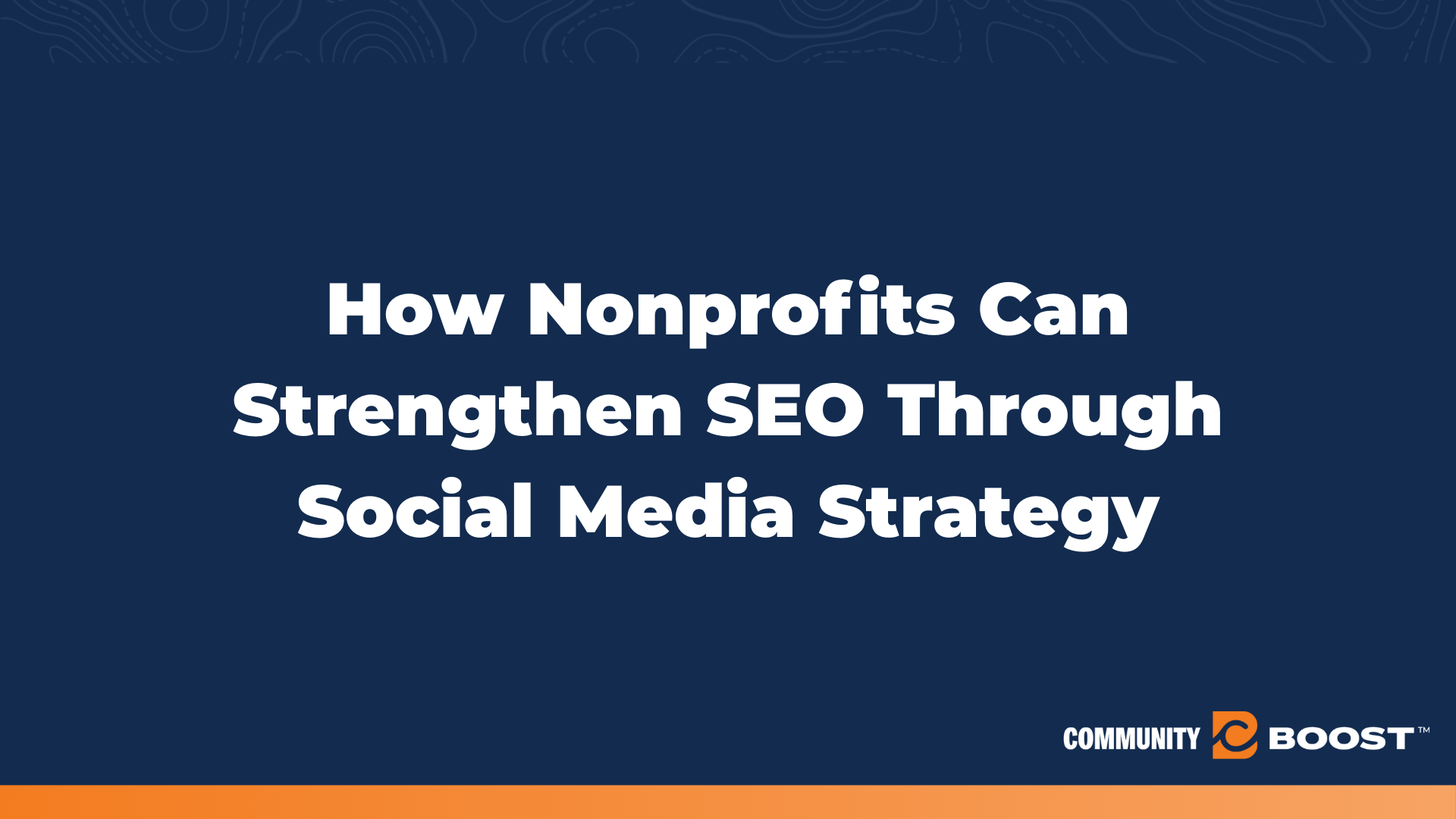Be the first to get Free Digital Marketing Resources + Insights
Trusted by 50,000 nonprofits
How Nonprofits Can Strengthen SEO Through Their Social Media Strategy
| Strategy | 0 comments
min to read ✭
Many nonprofits approach SEO and organic social media as separate efforts. But when strategically aligned, these two channels can work together to increase visibility, amplify engagement, and ultimately drive greater impact.
While social media is not a direct ranking factor in Google’s algorithm, its influence on SEO is well-documented. Social media can improve content discovery, accelerate indexation, and generate the kinds of engagement and backlinks that search engines reward. For nonprofit teams managing complex marketing strategies, integrating social and search efforts is a practical way to maximize resources and elevate performance.
This article explores how social media supports SEO and outlines practical strategies to help nonprofits align these two key areas of digital marketing.
The Relationship Between Social Media and SEO
Let’s clarify a common misconception: social media links are not treated by Google in the same way as traditional backlinks from websites. However, social media does play an indirect but important role in improving SEO performance.
Recent research and performance data highlight the following connections:
- High-quality content shared on social media can generate meaningful traffic to a website, which may improve on-site engagement metrics like time on page and bounce rate.
- Social signals such as shares, likes, and comments indicate content value. This type of engagement often leads to content being shared more widely, increasing the potential for high-authority backlinks.
- Social media content tends to be indexed quickly. Sharing new content across platforms can accelerate indexation in search engines and drive earlier traffic.
- Although Google does not weigh social links the same as backlinks from other websites, top-performing pages in search results often have significant engagement on social platforms.
In short, while social media is not a formal ranking factor, it remains a critical element in a nonprofit’s broader search strategy.
Why Social Media Supports SEO Strategy
There are several ways in which a nonprofit’s organic social media efforts can enhance SEO performance:
- Improved visibility for campaigns, thought leadership, and evergreen content
- Increased traffic to blog posts, resource pages, and lead-generating content
- Extended content lifespan by promoting it across multiple platforms and formats
- Stronger brand presence and recognition in search results
- Greater insight into content performance and audience preferences, which can inform future SEO content strategy
Integrated Strategies to Align Social and SEO
Here are four proven ways nonprofit teams can strengthen the connection between their social media and SEO efforts:
1. Link Building and Cross-Promotion
Encouraging users to share your content and link back to your site remains a fundamental part of SEO. Social platforms offer an accessible way to facilitate that process.
- Include social sharing buttons on every blog and resource page
- Repurpose long-form content into bite-sized social posts, always linking back to the full version
- Use social bookmarking platforms such as Reddit, Pinterest, or Quora to increase content distribution
- Share partner content and ask them to do the same for yours
2. Keyword Optimization in Social Content
Just like with traditional SEO, keywords are essential to discoverability on social platforms. Optimizing for platform-specific search can improve visibility.
- Use relevant keywords in captions, hashtags, and alt text
- Incorporate long-tail keywords that align with audience interests and search behavior
- Optimize bios and profile descriptions with high-intent keywords relevant to your mission
- Monitor trends using tools like Google Trends, Twitter Trends, or TikTok’s search bar
3. Optimize Video and Image Content for Search
With the growing influence of visual platforms like YouTube, Instagram, and TikTok, nonprofits should ensure multimedia content is search-friendly.
- Add keywords to video titles, descriptions, and closed captions
- Include transcripts and subtitles for accessibility and indexation
- Use high-quality images with descriptive alt text and branded visual elements
- Create consistent thumbnail styles that stand out in both social and search results
4. Use AI to Improve Content Creation and Optimization
AI tools can help streamline both social content production and SEO alignment.
- Generate keyword-optimized captions and headlines
- Use AI tools to write alt text for images and videos
- Create personalized and engaging social copy at scale without losing quality
- Analyze performance data to inform adjustments to both SEO and social campaigns
For nonprofits working to increase their digital impact, the integration of SEO and social media strategy is more important than ever. While social media alone will not drive search rankings, its influence on traffic, indexation, content visibility, and backlink potential makes it a valuable part of a well-rounded SEO strategy.
By investing in thoughtful cross-channel alignment, nonprofits can maximize the performance of both search and social efforts—ensuring their content reaches the right audiences at the right time, with the greatest possible return.
Looking for help developing an integrated SEO and social media strategy? Contact the Community Boost team to learn how we support mission-driven organizations every day.




